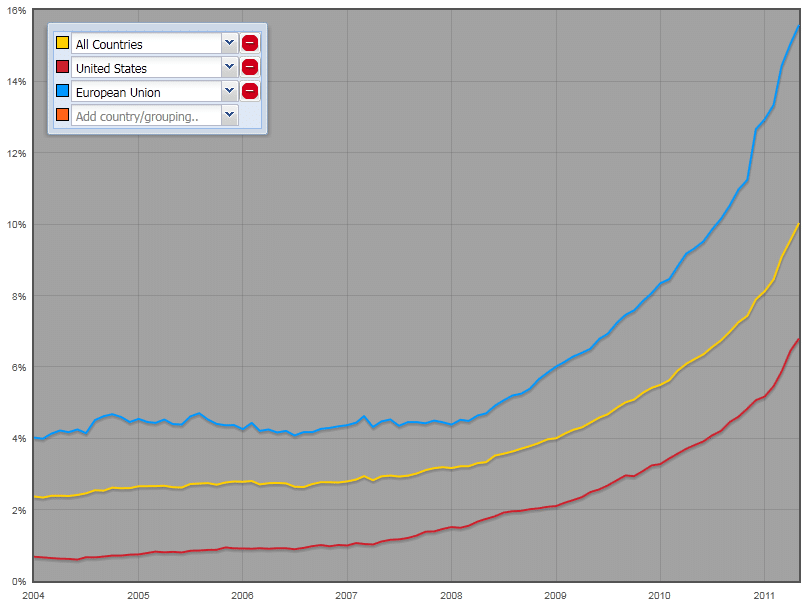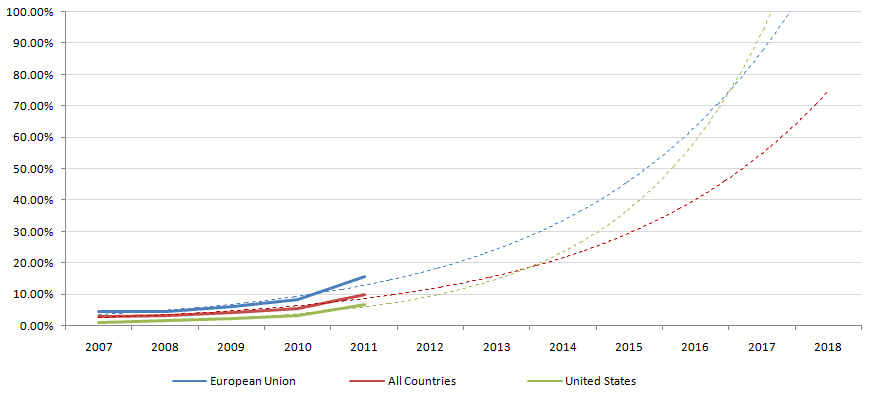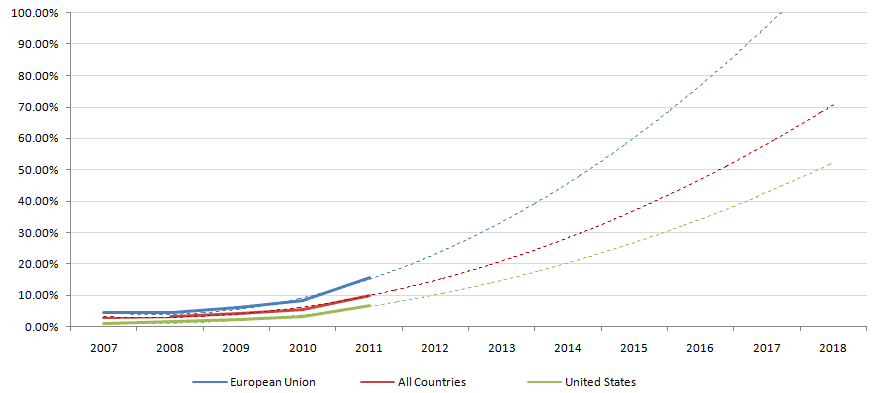In a previous article (IPv6 for Service Providers, SMBs and Technology providers), I was talking about the challenges that Service Providers, SMB and Vendors will be facing with IPv6. Now, I would like us to take a look at the current adoption rate for IPv6 for the United States, Europe and the entire World.
RIPE NCC is the Regional Internet Registry (RIR) for Europe, the Middle East and parts of Central Asia. They have a tool available online which allows us to view the penetration of IPv6 (it seems to be updated monthly). I’m going to concentrate on US, Europe and the World. The numbers can be viewed here. The graph below shows the relative number of IPv6 Enabled Networks:
If we make a simple projection forecast using optimistic methods (best case scenario) using exponential and polynomial models, we get this result:
How much adoption is required before IPv6 will be mainstream and usable? Don’t forget that IPv4 and IPv6 networks are exclusive: an IPv4-only computer will not be able to see an IPv6 web server for example. Let’s assume 50%.
This would mean a 2015-2017 horizon. We still have a number of years to prepare and migrate. Will it be enough? What will the transition state look like (half IPv4, half IPv6 connectivity)? How will information systems fare? Will we have to run dual standard servers for a while to accomodate both crowds (IPv4 only vs. IPv6) ?







